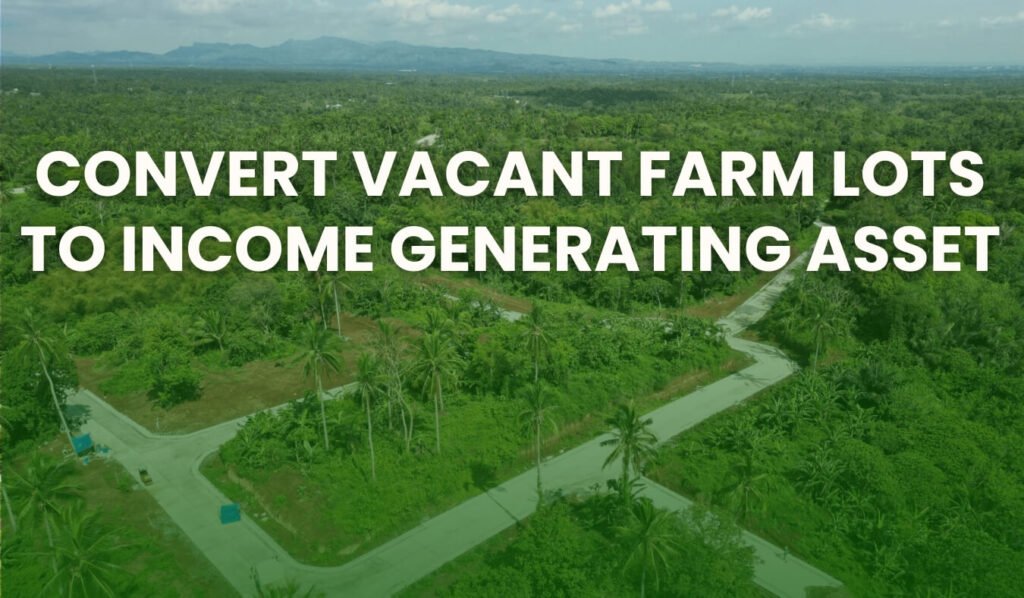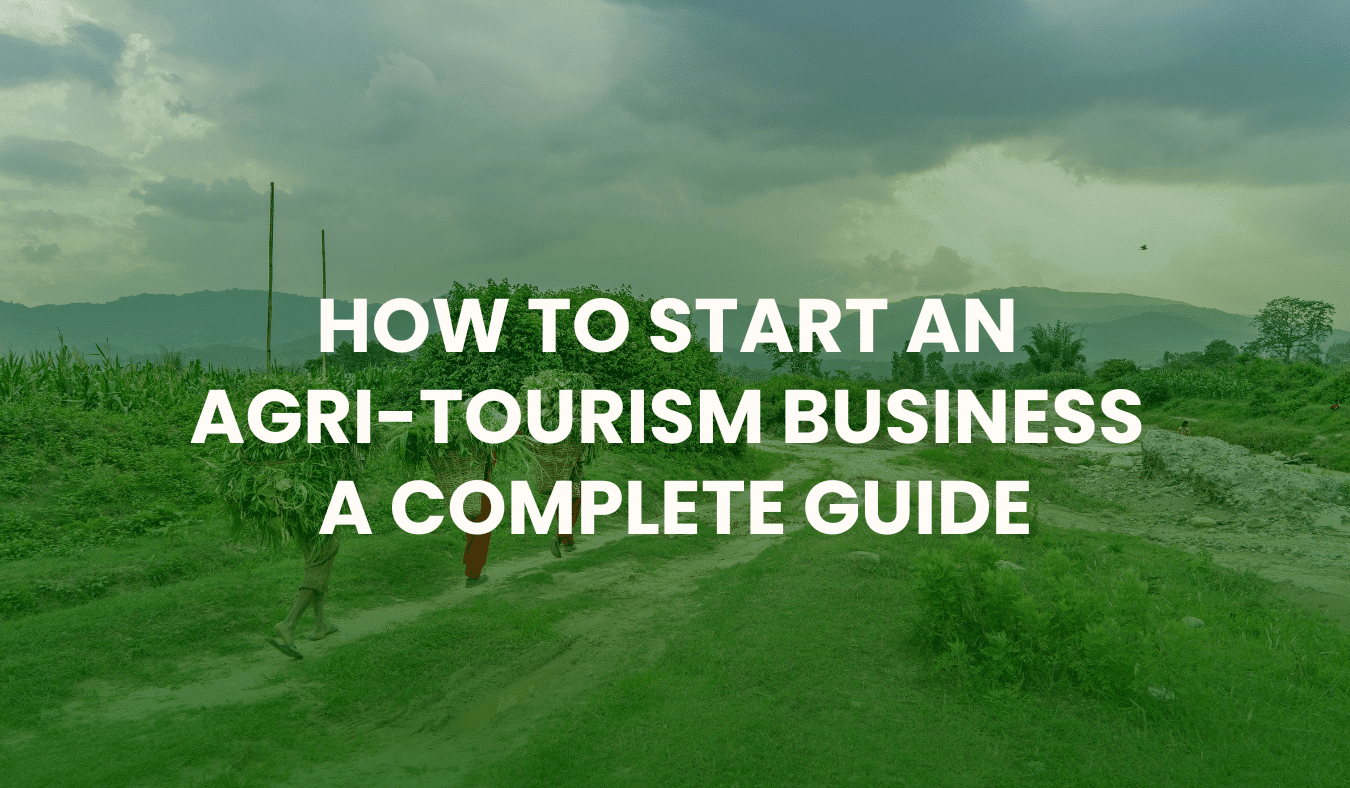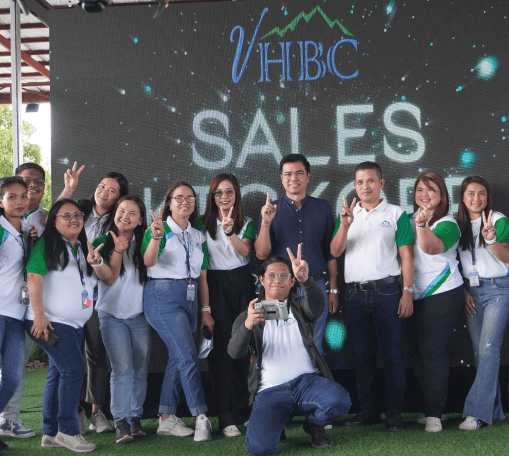In a rapidly evolving economy where land appreciation and passive income are key indicators of financial success, converting your vacant farm lot into an income generating asset is no longer just a good idea—it’s a strategic move. The first step in converting a vacant farm lot is understanding what makes an “income-generating asset”. Whether you’re a CEO, doctor, business owner, or local investor, unused agricultural land holds untapped potential. By applying the right strategies, that idle property can transform into a thriving business venture or a profitable investment property.
But how do you actually turn a dormant piece of land into a productive and sustainable source of income? Below, we outline the 7 strategic steps to help you get started—and why now is the perfect time to invest in agri-tourism and real estate developments like those offered by VHermosa Bright Corp.
Let’s explore.
Step 1: Understand the Value of an Income Generating Asset
An income generating asset is anything you own that produces regular income. Unlike assets that just sit and appreciate (like gold or raw land), these assets actively earn for you—through rentals, leases, tourism operations, or agricultural yields.
For landowners, this means turning a passive asset into an active one. Farm lots, when developed correctly, can:
Host agri-tourism experiences
Be transformed into luxury farm resorts
Offer lease opportunities for farming or events
Include residential or commercial rental spaces
According to experts, properties that blend real estate and agriculture—like leisure farm communities—are outperforming traditional investments in the Philippines due to rising land value, increased tourism interest, and demand for weekend getaways among urban dwellers.
Step 2: Conduct Feasibility Study and Market Research
Before building anything, assess the potential of your farm lot through a feasibility study. This involves:
Soil quality testing
Access to water and electricity
Road access and proximity to urban centers
Tourism traffic in the area
Competition in the local market
Also, consider trends in the agri-tourism sector. If you’re wondering what is agri-tourism—it’s a booming niche in the tourism industry where visitors experience agricultural activities first-hand, such as harvesting crops, staying in farm cabins, or joining eco-friendly retreats.
Check examples of successful agri-tourism businesses nearby. See what works. In the Philippines, farm resorts and leisure communities with scenic views are in high demand among city professionals seeking peace and connection to nature.
Step 3: Choose the Right Business Model
There’s no one-size-fits-all approach when converting a vacant lot. Depending on your capital, goals, and land location, here are several proven business models that convert land into income generating assets:
A. Agri-Tourism Resort
Ideal for scenic or elevated lots. You can build:
Organic farms with guided tours
Weekend cabins or AirBnB-ready homes
Outdoor activities like fishing, ATV trails, or hiking
B. Leisure Farm Community
Convert your lot into part of a larger leisure community. Offer lots for co-investors or develop themed villas for rent. This is where VHermosa Bright Corp. shines, offering high-potential properties like:
C. Organic and Specialty Farming
Lease the land to organic farmers or grow high-demand crops like:
Dragon fruit
Herbs and spices
Coffee and cacao
This creates recurring harvest-based income and supply contracts.
D. Events Venue or Glamping Site
More landowners are building rustic wedding venues and glamorous camping (glamping) experiences that cater to upper-class millennials and families.
Step 4: Secure Legal Requirements and Development Permits
To protect your investment and ensure smooth development, handle the legal side of things early. Here’s what you need:
Land classification check from the DENR or LGU
Conversion permits (if the land is agricultural and you plan to commercialize)
Building and zoning permits
VHermosa Bright Corp. assists investors by offering pre-vetted, titled, and ready-to-develop leisure farm lots that comply with these regulations, significantly reducing the hassle for first-time investors.
Step 5: Develop Infrastructure and Design Based on ROI
Now comes the exciting part—development. Your blueprint should balance cost-efficiency with future earnings.
Invest in:
Access roads and parking
Reliable water and power supply
Eco-friendly drainage and waste systems
Mobile and internet infrastructure
Aesthetics that match your theme (rustic, tropical, minimalist)
Use modular or prefabricated structures for faster returns. Design with ROI in mind, focusing on:
Cabin rentals
Day-tour packages
Agri-products and souvenirs
Events and venue fees
Projects like Mountain View Leisure Community are built with this vision—offering investors lots with panoramic views and shared amenities, primed for profitable development.
Step 6: Market Your Income Generating Asset to the Right Audience
Even the best farm resort or agri-tourism site won’t thrive without proper marketing.
Develop a digital presence:
Create a website and list your asset on platforms like Airbnb or Booking.com
Utilize Facebook and Instagram Ads targeting nearby cities
Partner with travel influencers or lifestyle vloggers
List your business on tourism and farm directories
You may also target event planners, local schools, or health and wellness groups for retreats and educational farm tours. Marketing to niche audiences creates high-quality, recurring income rather than relying on mass-market traffic.
Step 7: Partner With a Trusted Developer or Real Estate Group
If you prefer a more hands-off investment, work with a trusted property developer like VHermosa Bright Corp.
Their projects offer:
Pre-developed farm and leisure lots
Integrated community design and management
Scenic locations in Nasugbu, Batangas and other tourist-friendly zones
Site viewing assistance and investment consultation
By partnering with experts, you avoid costly mistakes, and benefit from a turnkey solution—perfect for busy professionals, doctors, CEOs, or OFWs who want high-value returns without day-to-day involvement.
Explore their full portfolio here: vhbc.com.ph
Why Agri-Tourism is the Future of Real Estate Investment
The question is no longer what is agri-tourism—but rather, how can you benefit from it now?
Agri-tourism offers:
Tax incentives
Lower operating costs compared to traditional resorts
Strong emotional appeal to families and millennials
Income diversification in case of market volatility
The Philippines, with its natural landscapes and rich culture, is perfectly positioned to become an agri-tourism hub in Asia.
Whether it’s a luxury farm resort, a glamping site, or a community of weekend homes, your income generating asset can serve as both a legacy and a revenue stream.
Final Thoughts
Vacant farm lots are often seen as idle, overlooked, and underutilized. But with the right vision and guidance, they can become thriving agri-tourism ventures or prime real estate developments—ready to earn and grow.
Follow these 7 steps and watch your land transform into a high-yield income generating asset that offers not only returns—but a sustainable future.
Ready to turn your land into profit?
Contact VHermosa Bright Corp. today for a Free Site Viewing
Visit: https://vhbc.com.ph/contact-us/
Explore Investment Properties: https://vhbc.com.ph/




























